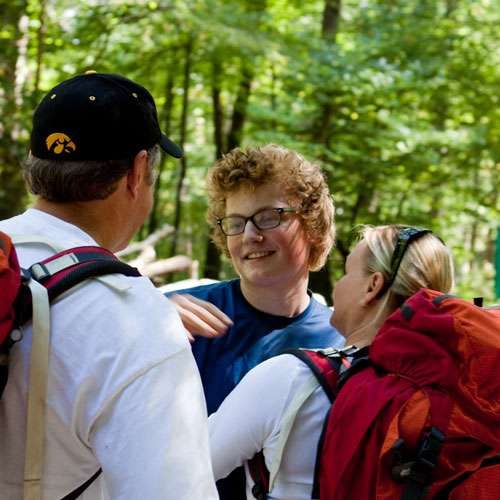As parents, the first thing we want in the world is for our children to be safe. When they are babies, we strap them in car seats and research the best practices for care. When they are young children, we watch them ride a bicycle for the first time with a helmet, training wheels, and protective pads. It is our instinct to protect them, and it can be heartbreaking to see them get hurt as they become more independent. But as many precautions as we take, there are always dangers in the world. Some we can anticipate, like their first heartbreak or a trip to the doctor. But others, like a teen engaging in self-harm, can be a complete surprise and just as painful.
Understanding Self Harm In Teens
Self-harm is a way in which some children and teens cope with emotional distress. Research shows that about 15 percent of adolescents engage in self-harm. There are various methods that can be considered self-harm, as the term itself refers to self-inflicting physical pain. Some forms of self-harm in teens include cutting, burning, scratching, and hitting. Self-harming behaviors are also commonly linked to other mental health issues or disorders such as anxiety, depression, or eating disorders.
One can feel the need to self-harm for many different reasons. They may not know how to verbalize their emotions. It could be their way of soothing sadness or other emotions. Or self-harm can be a response to feelings of hopelessness and inability to articulate negative thoughts.
Self-harm often starts in the preteen or early teen years, when emotions are more volatile and teens face increasing peer pressure, loneliness, and conflicts with parents or other authority figures. Teens who have experienced trauma, neglect, or abuse are more at risk than their peers who have not had those experiences. Self-harm can also be worsened by engaging in substance or alcohol abuse, as both lower self-control.
Some adults who have never experienced self-harm, or even been aware that this can be an issue for teens, may have difficulty understanding the emotions or impulses that can lead to self-harm. This lack of understanding can lead to insensitivity and stigma toward people who are often already struggling with serious emotional turmoil. If your child is engaging in self-harm, it is important to communicate with them in a way that they will not feel judged or attacked.
Self-harm is not the same as attempting suicide, but it is a symptom of emotional pain that should be taken seriously. If your teen is hurting themself, there may also be an increased risk of feeling suicidal, which is why they need to receive treatment for those underlying emotions. Self-harm behaviors become addictive and can wreak havoc on your child and in your family’s life. Aside from seeking a mental health professional for help, there are additional ways in which you can support and decrease your child’s desire to self-harm.
Five Ways to Address Self Harm
Overcoming self-harming behaviors will not be an overnight miracle. It is a process and takes time and work. Getting help is the priority. Once you get help, you can build, and move forward from there. This is not an issue you can tackle alone. Your child will be able to receive an effective intervention, create healthy habits and essentially heal. Here are some additional ways you can be helpful and supportive in the healing process:
- The “Feel Good” First Aid Kit. Identify things that make your child feel uplifted and happy. Photos, trinkets, a journal, bubble gum, etc. Every child is different. Find what calms and inspires your child and compile these things in an accessible box that they can seek when they are feeling down.
- Communicate and Reevaluate. Help your child better understand and reflect on the situations and stressors that trigger their negative feelings. Come up with a reasonable plan to avoid these triggers and discuss how to manage them if they arise. This helps your child be prepared and have the necessary skills at their disposal. Also, talk about your personal triggers and the healthy ways you cope. Your child will find comfort in knowing they are not alone in feeling stressed sometimes.
- Replace the Self-Harming Behaviors. Come up with creative alternatives for when your child has the desire to self-harm. Holding an ice cube, tearing paper, shredding a sheet, snapping a rubber band, sucking a lemon peel and pounding a pillow are a few examples of methods that can be used to combat the temptation to self-harm.
- Get Physical. The rush of adrenaline that comes from engaging in physical activities, such as running, dancing and playing chase with pets produces the same chemical surge that self-injury does. Encourage your child to get active and use this as a healthy way to manage emotions and blow off steam.
- Support Through the Set Backs. Shaming, criticizing and lashing out at your child if they experience a setback can be disasters. This type of reaction can trigger the urge to continue self-harming. Continuously remind yourself that this is a process and there will be obstacles along the way. Teach your child how to pick up and try again tomorrow. Your support means everything.
As we stated before, finding support and clinical help is crucial for addressing self-harm. Often, teens who are engaged in self-harm feel guilt and shame around these behaviors and may try to hide the signs of self-harm. It is important to be aware of your child’s history with self-harm and be looking for any signs of these behaviors such as hiding their body in long or baggy clothes, new injuries, old injuries that are not healing appropriately, or isolating themselves. Many times, when a teen is struggling they will pull away rather than reach out for help.
Wilderness Therapy for Better Mental Health
Trails Carolina offers a therapeutic wilderness program that is based on decades of experience and scientific research that balances the benefits of wilderness therapy with the practical experience of a residential base camp. Upon arrival, each student is assigned a Primary Therapist who immediately conducts a thorough clinical assessment. Assessments and progress reports will continue throughout your child’s stay, and every member of the Trails Teams—Therapeutic, Wilderness, Academic and Residential—is involved in this process to improve our understanding of your child, their progress, and any remaining challenges.
Our supportive therapeutic wilderness programs for troubled teens allow us to teach practical skills for positive behavior, then test these newfound skills your child has gained to help create stronger behavioral patterns. Through expeditions and clinical expertise, Trails provides an environment for your child to learn to effectively express their emotions and adopt healthy behaviors.
Being in nature presents a sense of connectedness, purpose, and belonging. In wilderness therapy programs, students spend time reflecting on past choices, exploring future possibilities and discovering the lessons only nature can teach.
While the wilderness provides many unexpected opportunities for learning and growth, the natural consequences of negative and positive behavior are very predictable. Rather than trying to reward or punish individuals for their behaviors, nature teaches powerful and life-changing lessons absent any judgment. Over time students in our wilderness therapy programs begin to understand these consequences and take ownership of their actions, leading to greater autonomy and long-term success.
While the wilderness provides an excellent setting for our therapeutic program, we wouldn’t be able to achieve lasting, positive outcomes and address the unique developmental and psychological needs of each student without deep expertise in clinical theory and evidence-based practices. We work individually with each student to help them set positive goals, and move forward on their journey.
At Trails Carolina, family plays an important part in the healing process. Teens who have experienced self-harm behaviors need to learn to communicate with the people in their life to address the emotions that lead to the behaviors. Your child’s long-term success is predicated on the support, participation, and growth of the most important people in their life – family. A child that returns home to an unchanged family who hasn’t developed the skills to support their progress is far more likely to slip into well-worn, negative patterns of behavior. We also offer an optional four-day extended stay option for the entire family, called Common Ground. Families stay in a lovely home and benefit from extended time together in a supported environment to begin using your new ways of communicating. It’s highly effective in helping students slowly and purposefully transition out of the environment of our Trails program and back into everyday life.
Trails Carolina Can Help
Trails Carolina is a wilderness therapy program for adolescents ages 10-17 who struggle with troubling behavior. This program uses adventure-based therapy as a way to address the whole child and lead them to new paths of self-awareness, self-reliance, and improved self-confidence. Being removed from their fast-paced and often overwhelming environment, they have the opportunity to focus on themselves and improve their behaviors. Trails Carolina supports and nurtures students as they develop and improve the skills they need to lead happy and healthy lives.
Contact us at 800-975-7303.
Get started today
Contact us today to learn how Trails Carolina can help your family
Trails saved my daughter’s life. Amanda is an amazing human and a brilliant therapist. I am so grateful to her, Science Steve, and the other wonderful people who could reach my daughter at a time when I could not.
Margot Lowman August 2022
Great life changing experience for our son. After becoming addicted to gaming during covid he was very depressed. At Trails he experienced the wilderness, Science Steve, learning survival skills and top notch therapy and support etc… I highly recommend! This gave our son and our family a renewed family bond full of love and excitement about his bright future.
Winnifred Wilson July 2022
Outstanding clinical work and superb staff! There’s a great culture at this company and it shows with how they engage with families/clients.
Kristin Brace June 2022
Discover If Trails Is The Right Program For Your Child
Take our short online assessment and help us better understand how we can help your family.




